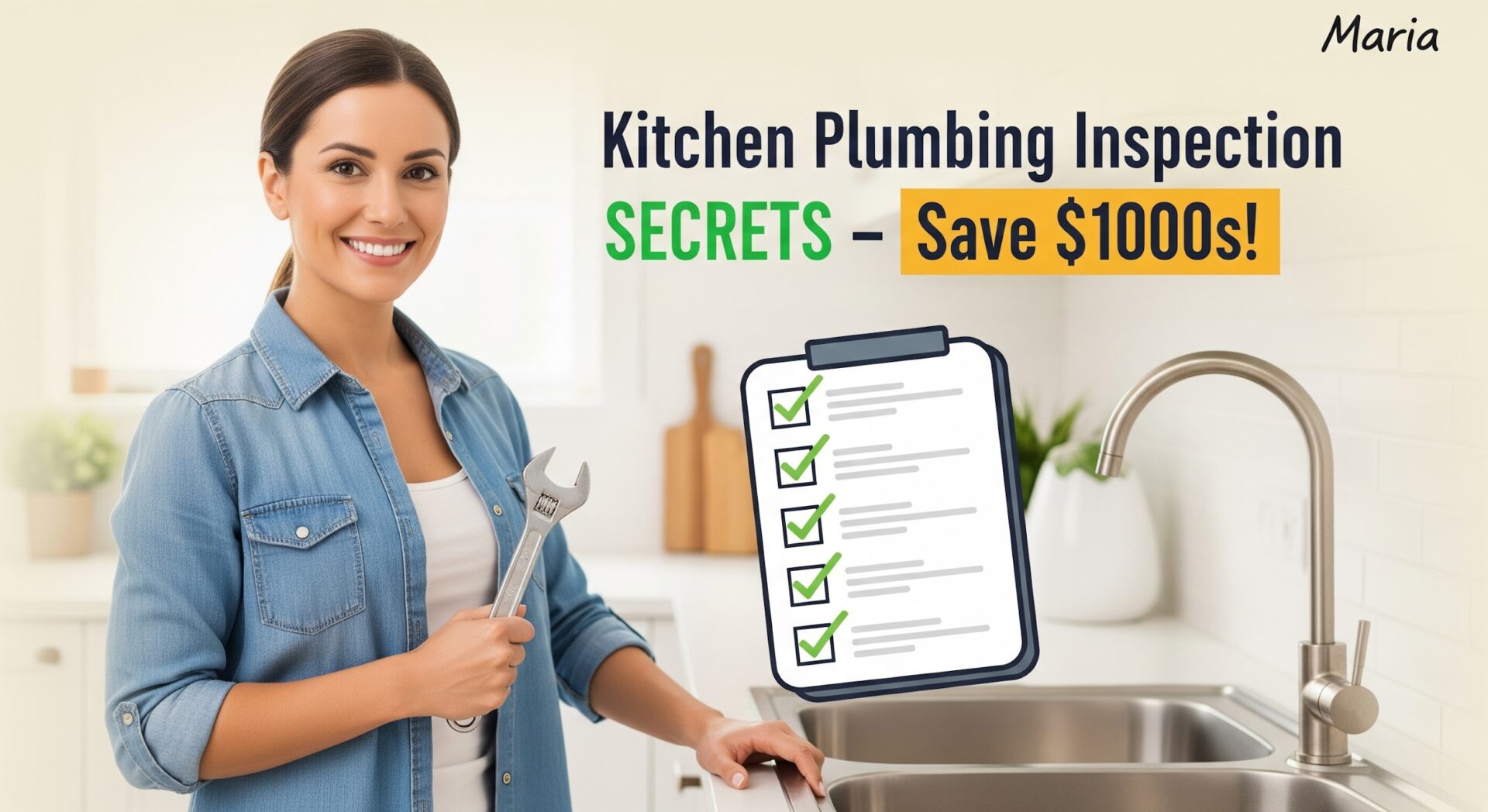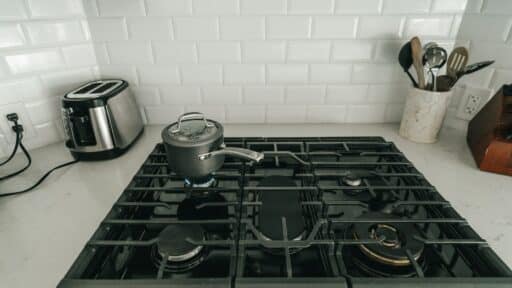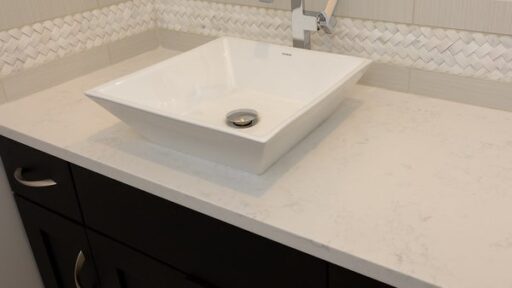Hey there, future homeowners! Maria here from SewerTV Plumbing. Let me tell ya, after 14 years of crawling under sinks and dealing with everything from exploding garbage disposals to mysterious mushroom colonies (yep, that’s a thing), I’ve got some serious wisdom to share.
Last week, I received a call from a couple who had just moved into their “dream home.” Two days in, their kitchen sink backed up during their housewarming party. Water everywhere. Guests stepping in puddles. The smell? Let’s just say it wasn’t the appetizers causing problems. It could’ve been avoided with a proper check before buying.
Why Kitchen Plumbing Inspections Matter for Home Buyers
Here’s the deal: kitchen plumbing issues are like that one relative who shows up uninvited to Thanksgiving. They wait until the worst possible moment to cause chaos. And unlike Cousin Eddie, these problems cost real money to fix.
I’m talking $500 to $5,000. Sometimes more. That new couch you wanted? Gone. That vacation? Postponed. All because nobody checked if the pipes were doing their job properly.
The EPA folks say fixing leaks saves about 10% on water bills. That’s like getting a discount on life, every single month. Plus, you avoid those 2 a.m. panic calls to plumbers like me. (Though honestly, we don’t mind emergency rates helping pay for my kids’ college!)
But seriously, wouldn’t you rather know about problems before signing papers? A solid roof and home inspection should always include the plumbing. Don’t let anyone tell you different.
Key Kitchen Plumbing Components to Examine
OK, time to get our hands dirty. Well, not literally, save that for after you buy the place.
First things first: Sometimes you can see problems, sometimes you can’t. That’s why we use camera inspection services at SewerTV. It’s basically a colonoscopy for your pipes, except less awkward and more useful. We snake a tiny camera through and show you exactly what’s happening in there. Pretty cool, right?
Now, here’s what YOU can check without fancy equipment:
The sink faucet. Wiggle it. Seriously. If it moves like a bobblehead doll, someone did a lazy install. Should be rock solid.
Those shutoff valves. Try turning ’em. Can’t budge? That’s trouble waiting to happen. When (not if) something leaks, you’ll need these babies to work.
The P trap. That’s the curvy pipe underneath. Looks like a “P” lying on its side. Check for cracks, rust, or that lovely green gunk that means it’s older than my favorite wrench.
Garbage disposal: Turn it on WITH water running. Please. I’ve seen what happens when people forget the water. If it sounds like it’s grinding rocks or your teenager’s playlist, it needs help.
Where the dishwasher connects, get a flashlight. Look for water stains, rust, or anything that seems… swampy. I once found a whole ecosystem under one dishwasher. The homeowners named it “Bob.” Don’t be like them.
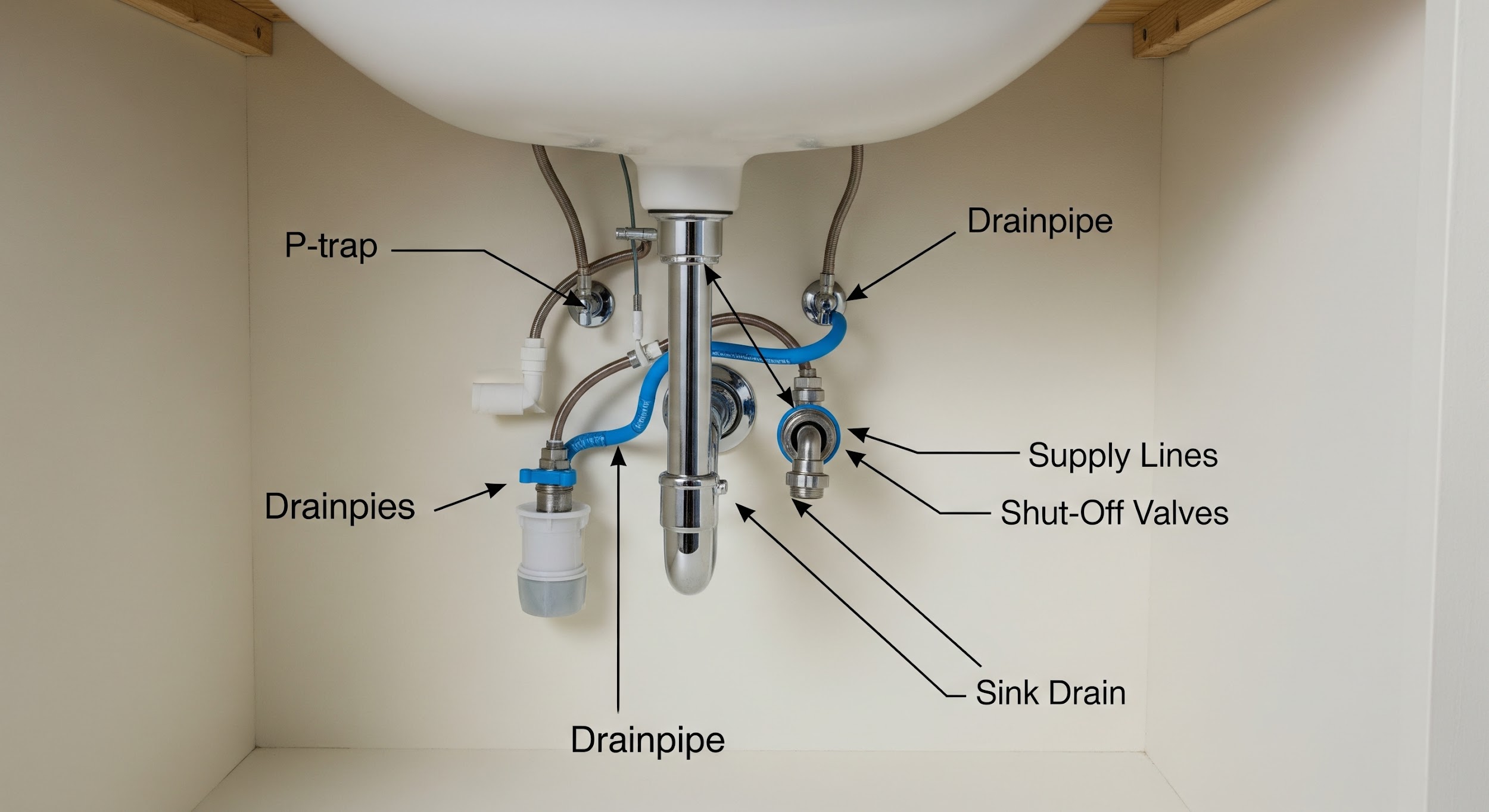
Testing Water Flow and Pressure
Here’s a trick my dad taught me when I was knee-high to a pipe wrench: Turn that faucet on full blast. It should sound strong, like it means business.
Weak trickle? That’s either mineral buildup (fixable) or pipe problems (expensive). Hot water should get hot in less than a minute. If you can make a sandwich while waiting, something’s wrong with the setup.
Test this: Run the kitchen sink, then turn on the bathroom faucet. Kitchen pressure drops like crazy? The whole house plumbing system might need work. That’s negotiation ammunition right there, folks.
One time, I tested a house where the water pressure was so bad that it took 5 minutes to fill a coffee pot. The seller tried to say it was “water conservation.” Nice try, buddy.
Inspecting for Leaks and Water Damage
This is where things get real. Time to play detective.
Get down there with a flashlight, yeah, I know, not glamorous. But neither is mold remediation. Look for:
- Dark stains on cabinet floors
- Soft, squishy wood (poke it gently)
- That musty smell that says “moisture party”
- Bubbling paint or wallpaper nearby
True story: Found a leak so old, once, stalactites were forming under the sink. Actual mineral deposits hang down like a tiny cave. The homeowner thought it was “neat.” The repair bill? Not so neat.
Check behind the dishwasher, too. Pull it out, or shine a light back there. I’ve found everything from small leaks to… well, let’s just say nature finds a way when there’s moisture.
Don’t forget to look UP. Water travels. If there’s a bathroom above the kitchen, water stains on the ceiling are bad news bears.
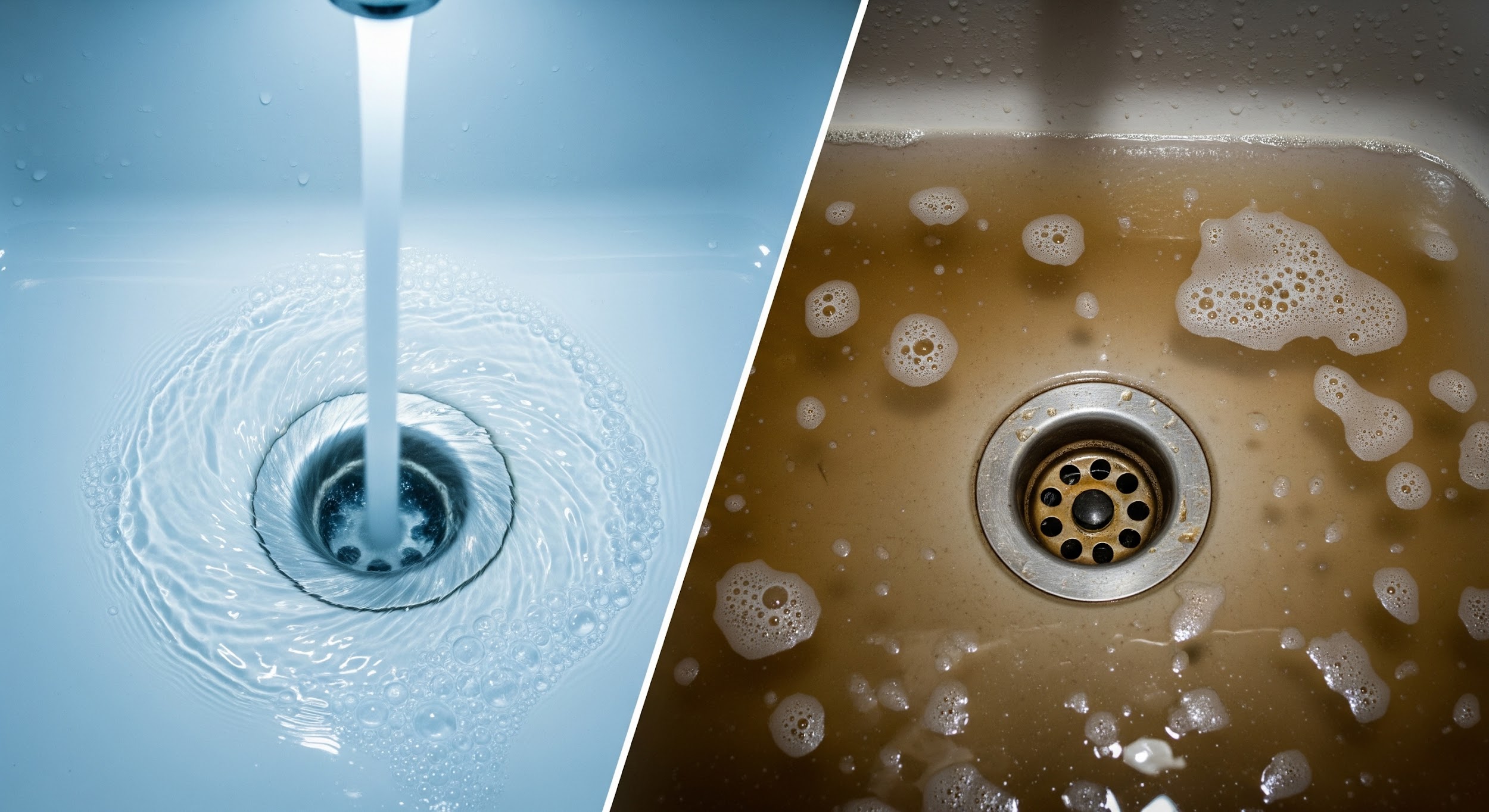
Evaluating Drain Performance and Blockages
My favorite test is to fill the sink halfway and then pull the plug. It should swirl down like a mini tornado in under 30 seconds. Taking forever? That’s a partially clogged drain, friend.
While it drains, listen. Gurgling sounds mean venting issues. That’s plumber speak for “air can’t get where it needs to go.” It’s like trying to drink a thick milkshake through a straw that’s too small.
The garbage disposal should purr, not growl. And please, PLEASE run cold water when you test it. Hot water melts grease, which then solidifies further down. Learned that the hard way as an apprentice. My boss wasn’t happy.
Oh, and give the drain area a sniff. I know, gross. But if it smells like something died down there, something probably did. Or your drain needs serious help. Either way, that’s a problem.
Assessing Pipe Age, Material, and Condition
Pipe materials tell stories. Here’s the cast of characters:
Copper, the old reliable. Looks penny colored when new, turns green when it’s tired. It can last 50+ years if it’s happy. If it’s green and crusty? It’s not pleased.
PVC: The modern hero. White plastic, somewhat unappealing, but it does its job. Good for 25 to 40 years, unless it was used incorrectly.
Galvanized steel is the villain. Gray metal that rusts from the inside out. After 30 years, it’s probably planning its revenge on your water quality.
I once found a house where someone had “fixed” a leak using a garden hose and clamps. Points for creativity, negative points for everything else. If you see anything held together with duct tape, zip ties, or hope, run.
When to Call Professional Inspection Services
Sometimes you need the pros. We’ve tools that can see through walls (legally), cameras that can explore pipes, and the ability to spot trouble before it happens.
Professional inspections cost $100 $500 for basic stuff, up to $1,100 for the full camera treatment. Expensive? Sure. But I had a customer last month who spent $300 on an inspection and discovered $12,000 worth of sewer line problems. That $300 saved them from buying a money pit.
We catch stuff like:
- Tree roots are throwing a party in your pipes
- Pipes sagging like my teenager’s jeans
- Cracks are invisible from the outside
- That previous owner’s “creative” plumbing solutions
Red Flags That Should Stop a Purchase
Some things, you just walk away from. Here’s my “absolutely not” list:
Mold everywhere. That’s not just a plumbing issue, it’s a health hazard. I once saw a place where the mold had its own zip code.
Polybutylene pipes, Also Known as Gray plastic pipes, were used in the 1970s and 1990s. They fail randomly and catastrophically like a ticking time bomb made of disappointment.
Uncle Bob’s DIY special. If it appears that someone watched one YouTube video and went overboard with the plumbing, expect problems. Code violations aren’t just paperwork; they’re expensive paperwork.
Sewer stench throughout. If the whole house smells like… well, you know… the main line is probably shot. That’s my minimum $5,000 to fix. Minimum.
Active leaks with buckets. Saw a house where the “solution” to a leak was a bucket brigade. Three buckets, strategically placed. That’s not a solution, that’s surrender.
Keep browsing homes if you see these issues. Trust me, there’s always another house without these headaches.
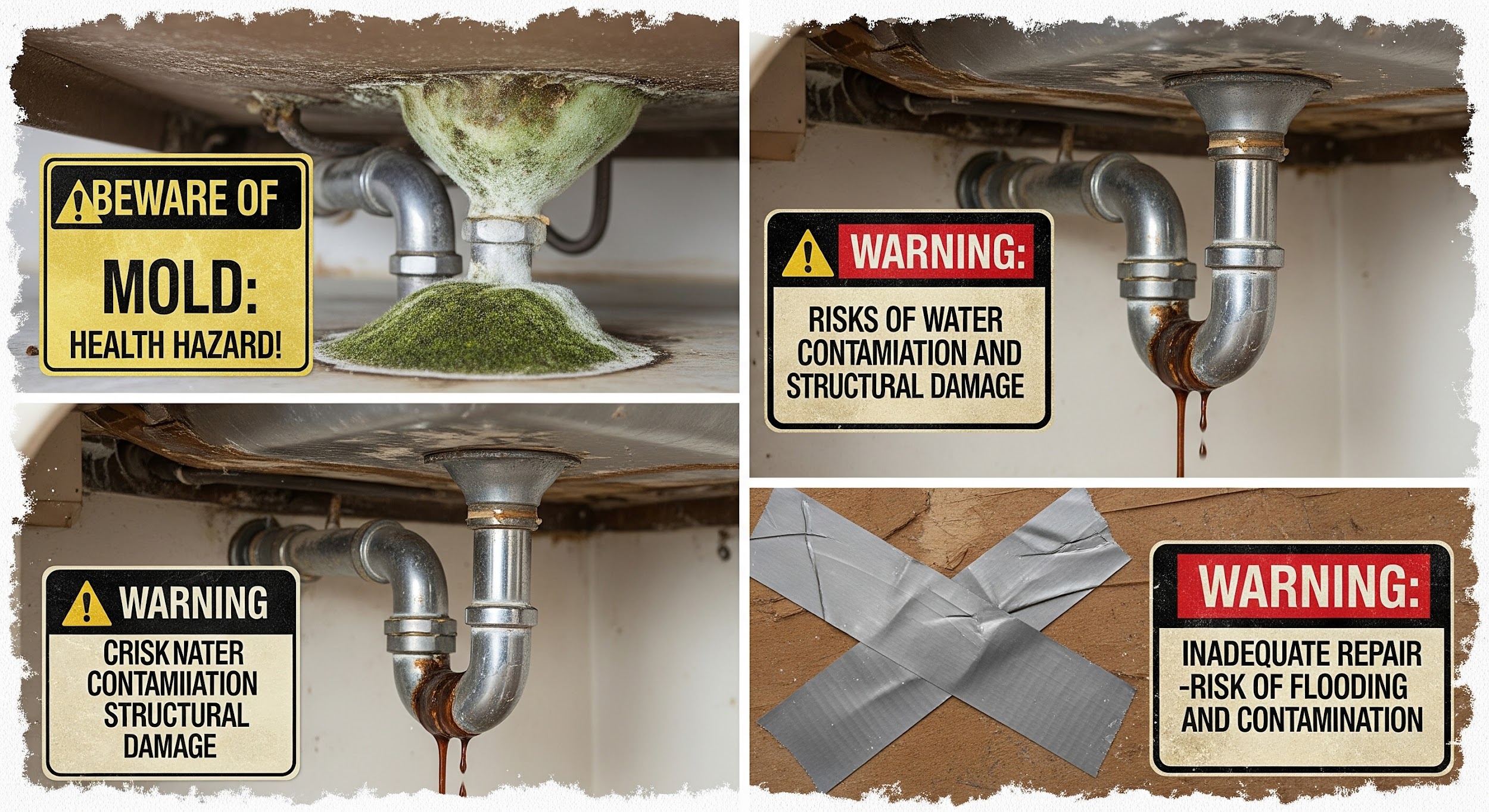
Your Next Steps
You made it this far, congrats! You now know more about kitchen plumbing than most home buyers. That’s power, my friend.
Take this kitchen plumbing inspection checklist with you. Snap photos of anything weird. Ask lots of ’em. Don’t let anyone rush you. This is likely the biggest purchase of your life. A few extra minutes checking pipes won’t hurt.
Found your perfect place? Awesome! Keep those pipes happy with regular maintenance tips. An ounce of prevention and all that jazz.
Remember, if you need us, we’re just a call away. Day or night. (Though try the day first. My husband appreciates it.)
No worries, we’ll help you transition smoothly into homeownership. Now, get out there and find that dream home with perfect plumbing!
Maria Martinez is the Lead Drain Specialist at SewerTV Plumbing. When she’s not rescuing kitchens from plumbing disasters, she’s teaching her three kids that toilets aren’t toy storage systems and helping her husband understand why they need 47 different wrenches.


